Title : Synergistic effects of garlic (Allium sativum) skin and guava (Psidium guajava) leaf extracts on growth, feed efficiency, morphometry, molting dynamics, and histology in whiteleg shrimp (Litopenaeus vannamei, Boone, 1931)
Abstract:
Understanding the impact of plant-based dietary supplementation in aquaculture holds significant potential for enhancing productivity and sustainability. This study investigated the synergistic effects of garlic skin extract (GSE) and guava leaf extract (GLE) on growth, feed efficiency, morphometry, and molting dynamics in Litopenaeus vannamei (Boone, 1931) during a 60-day feeding trial. Four dietary treatments—Control, GSE, GLE, and Complex—were evaluated using a completely randomized design, assessing final length (FL), final weight (FW), survival rate (SR%), feed conversion ratio (FCR), biomass, condition factor (CF), and microbial load (Vibrio spp.) in the digestive tract and gills, along with morphometric characteristics and molting frequency. Results showed that the GSE diet significantly enhanced biomass (100.80 ± 20.00 g) and survival rate (60.00 ± 8.66%), while the Control group exhibited the highest final length (10.77 ± 0.23 cm). The GLE diet resulted in the highest final weight (9.02 ± 1.76 g) and condition factor (1.30 ± 0.56), indicating improved physiological condition. GSE supplementation also led to the highest molting rate (11.47 ± 0.26) and the shortest molt cycle (2.99 ± 1.09 days), suggesting enhanced molting dynamics. Microbial analysis revealed the lowest Vibrio counts in the Control group, with GSE reducing Vibrio loads in the digestive tract but slightly increasing them in the gills, while GLE maintained balanced microbial control across both sampled areas. Positive correlations were observed between final length, biomass, and survival rate, whereas the feed conversion ratio was inversely correlated with the condition factor. Histological analysis showed significant alterations in the hepatopancreas and muscle tissues of L. vannamei supplemented with GSE and GLE, where GSE boosted cellular activity, tissue repair, and hepatopancreatic function, and GLE preserved muscle fiber integrity and overall tissue health. The Complex treatment produced mixed effects, likely due to interactions between its bioactive compounds. In conclusion, both GSE and GLE diets improved growth, survival, tissue integrity, and microbial management in L. vannamei, with GSE excelling in biomass production and molting efficiency. These findings underscore the potential of plant-based dietary supplements in enhancing shrimp production and emphasize the importance of optimizing formulations for sustainable aquaculture practices.



